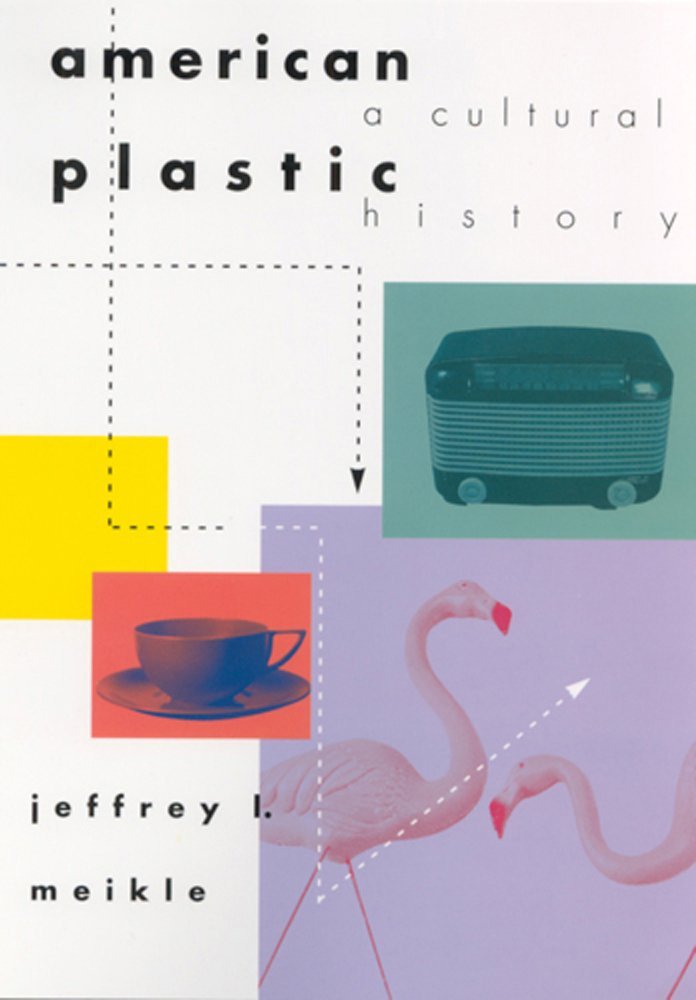
“The term ‘plastic person’ became so common [in the 1960s and 70s] that it obviously satisfied a cultural need. By 1984 to refer to someone as plastic was such a cliché that only baroque elaborations avoiding the word itself remained convincing. In that year a review of Frederick Barthelme’s Second Marriage invoked various plastics and their qualities — without ever mentioning the word — to generalize about the novel’s representation of life in sunbelt suburbia. The reviewer, novelist Ron Loewinsohn, described Second Marriage as possessing the ‘arresting, slightly over-detailed superrealism of a group of Duane Hanson sculptures.’ The novel’s characters were ‘thoroughly ordinary’ people captured ‘in the midst of actions that are quintessentially unimportant.’ They inhabited ‘a thoroughly recognizable contemporary urban America, with its subdivisions, shopping malls, apartment complexes and drive-ins, a world of surfaces, all of which are either disposable or easy-to-clean — nothing will take or leave a lasting impression.’ As Loewinsohn presented Barthelme’s America, not only the contemporary landscape was plastic. Frequent divorce and remarriage yielded unstable ‘ersatz’ families whose people, Barthelme’s characters, were ‘no thicker than Formica’ though they ‘hunger[ed] obscurely for some continuity with the place and with each other.’ The review observed that the novel’s ‘world of surfaces remains so sterile because it is so rarely penetrated by any kind of authentic experience.’ Although Loewinsohn could no longer refer directly to plastic people without seeming trite, his metaphors suggested that intellectuals still considered the concept valid.
“Not all references to plastic people implied they were as fake as vinyl siding. Charles Reich, hardly a social critic with a high opinion of synthetics, suggested in The Greening of America that people raised in plastic surroundings would enjoy a special plasticity. He asked readers to imagine ‘a boy or girl . . . brought up in a plastic home, with rugs and furniture that have no more individuality or character than the furnishings of an expensive motel.’ Unlike children living in houses with ‘genuine character’ who became rooted in their surroundings, the ‘child of a plastic home’ would be ‘equally “at home” anywhere.’ Lacking attachments or loyalties, such a ‘rootless and truly liberated individual’ would disdain its parents’ ‘slavish and passive dependence on consumer goods’ and might even become a threat to an authoritarian ‘corporate state.’ Reich’s theory suggested a dialectic moving from a plastic society’s rigidity to the plasticity of free individuals embracing reality without fear of change.
“Among the first to observe a new plasticity of personality were sociologist David Riesman and his associates. In 1950, as the first postwar children emerged from cotton diapers and plastic pants, they took the national pulse in The Lonely Crowd: A Study of the Changing American Character. In this famous monograph Riesman described three types of social character — all based on an assumption that successful societies require conformity. A ‘tradition-directed’ person, unknown in America since the eighteenth century, was one ‘whose conformity is insured by [a] tendency to follow tradition.’ An ‘inner-directed’ person, the mainstay of entrepreneurial capitalism, was one ‘whose conformity is insured by [a] tendency to acquire early in life an internalized set of goals’ — a person whose ‘psychological gyroscope’ kept him balanced regardless of others’ opinions. But Riesman found few gyroscopes. Postwar Americans, adrift in the present, were ‘other-directed persons . . . whose conformity is insured by their tendency to be sensitized to the expectations and preferences of others.’ They moved through life guided by ‘radar,’ picking up cues from others as to ‘rapid adaptations of personality’ needed for survival. Riesman feared Americans would ‘lose their social freedom and their individual autonomy in seeking to become like each other,’ as if, abandoning his metaphors, they were all extruded through the same plastics die.
“To the extent that Riesman’s analysis was accurate, postwar Americans were learning to be plastic in a different sense — to remold themselves as circumstances required. Self-confessed ‘chameleon’ Jake Horner, one of the 1950s’ more honest fictional characters, phrased it well in John Barth’s The End of the Road when he said, ‘We’re always reconceiving just the sort of hero we are’ — or, on another occasion, ‘A man is free not only to choose his own essence but to change it at will.’ Horner had a limited stock of roles to choose from, but other people benefited from scores of possibilities offered by the mass media. Jerzy Kosinski’s novel Being There (1971) presented a simple tale of Chance the Gardener, a man who emerged full-grown from a hermetic existence into the so-called real world knowing only what he had seen on television. Befriended by an elderly industrialist and his young wife, Chance wondered how to behave and finally settled on ‘the TV program of a young businessman who often dined with his boss and the boss’s daughter.’ As a basic premise he believed that ‘by changing the channel he could change himself.’ At a passive extreme, the idea of personal plasticity yielded the character created by Woody Allen in the film Zelig (1983), a chameleonlike figure whose appearance, demeanor, personality, and even skin color changed instantly to reflect those of the people he happened to be among.”
— from Jeffrey L. Meikle, American Plastic: A Cultural History (Rutgers University Press, 1996)